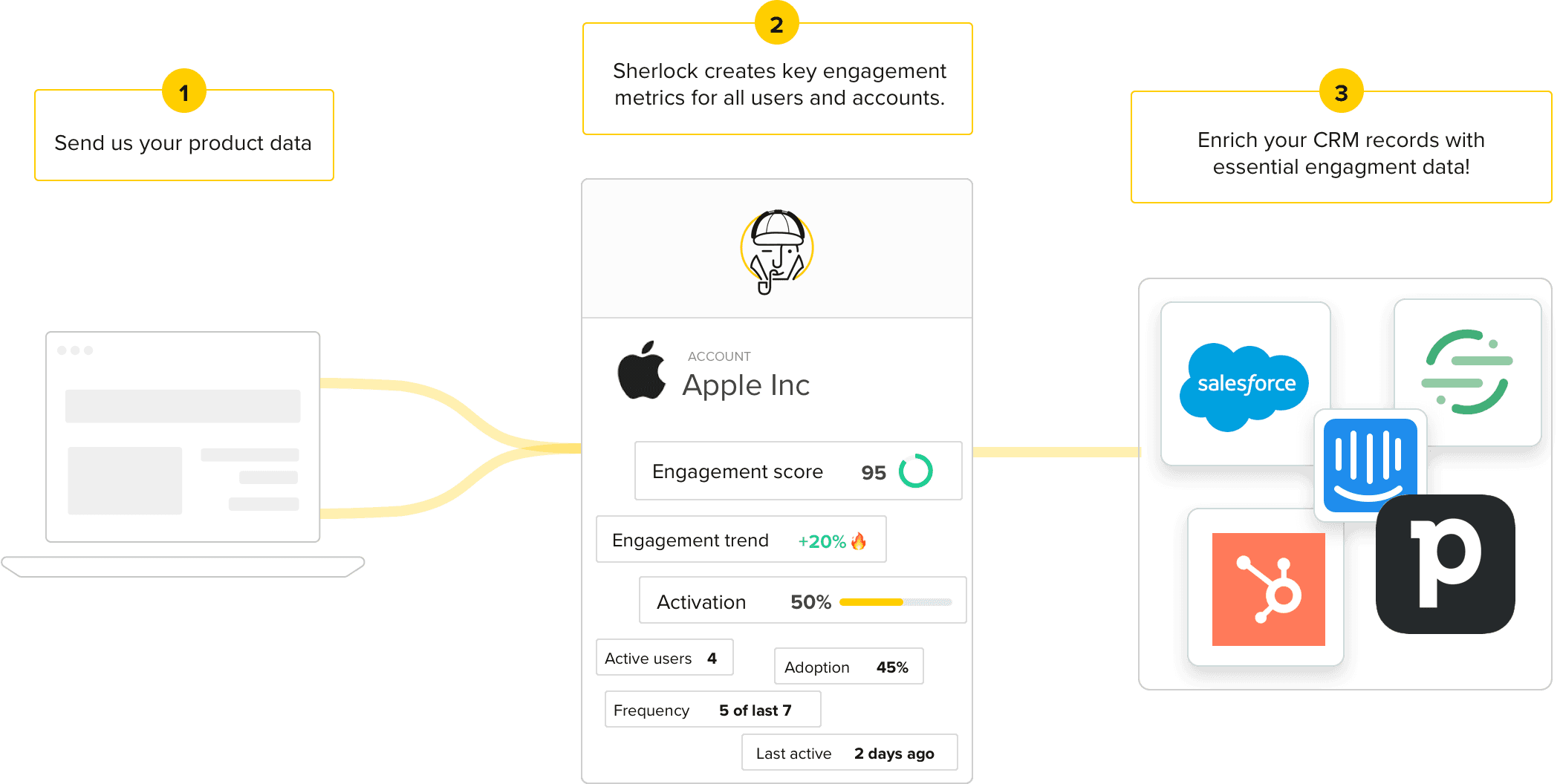
Let’s say you’ve got a brilliant engineer. We’ll call them Joe.
Joe’s the kind of person who lights up when someone says, “Wouldn’t it be great if we could…” Before the sentence finishes, Joe’s already sketching a solution.
So when someone mentions that the team needs a dashboard — something to show product usage, feature engagement, churn risk — Joe jumps in.
“I can build that. Give me 24 hours.”
And true to form, Joe gets it done.
SQL, cron job, Python script, a slick little dashboard UI. It works. Everyone claps. Slack reacts are given. Maybe it even becomes a lightning talk at the next hackathon. For a moment, it’s magic.
But here's the part that no one thinks about at the time:
Joe hasn’t just built a dashboard. Joe’s built a system.
A standalone system. With a Separate UI. Separate logic. Separate life.
It’s not part of your CRM. It’s not embedded in Intercom. It’s not visible in Zendesk, or Jira Service Management, or Hubspot, or Salesforce.
It’s one more tab in someone’s browser. Maybe bookmarked. Maybe forgotten.
Hi, my name is: Analytics Joe
What started as a one-day dashboard has become something else. And now it’s grown legs. A tail and two heads:
Product wants new metrics added
CS wants to tweak the churn score formula
Sales wants a version filtered by ARR
Marketing wants it pushed into HubSpot
Someone changes the event schema, and things break
Every time, someone pings Joe.
Joe, who is now maintaining large scale event ingestion, data joins, metric logic, integration scripts, user access permissions, and… the roadmap that got left behind.
What started as a 24-hour win is now a full-time second job for Joe.
Joe built the analytics. Then Joe became the analytics.
Six months later: The churn that shouldn’t have happened
Now zoom out.
A valuable customer churns. $20k a year. Maybe $50k.
Leadership asks:
“Didn’t we have a dashboard for this?”
We did.
It just:
Lived on its own island, in a tool no one opened
Used an outdated definition of “engagement”
Missed the early warning signs — feature drop-off, login decline, spike in support tickets
Why?
Because Joe had other things to do. And because the dashboard wasn’t built to evolve.
It wasn’t integrated. It wasn’t visible. It wasn’t maintained.
It wasn’t useful — even if the data was technically there.
The real cost of DIY analytics
It’s easy to think of internal builds as “free.”
Often there’s a lot more to it. Here’s what DIY solutions can really cost:
1. Time (stolen from other work)
For any product to work, you don’t just build once. You maintain it forever.
Every schema change, every metric tweak, every integration — someone has to own it. That takes time. And if the person who owns it also owns other work, this new project can cannibalize their ‘day job.’
2. Trust (that quietly erodes)
The dashboard exists, so people assume it’s accurate. But if no one updates the logic or looks at the numbers over even just a few weeks, trust slips away. Slowly. Quietly. Fatally.
Every time a teammate open the dashboard and asks “wasn’t that number the same last time?” trust erodes a little bit more.
3. Signals (that go unseen)
The data was there. But it wasn’t where people work.
No Slack alerts. No CRM tags. No Zendesk warnings.
Just another tab that never got opened. Data doesn’t matter unless it drives action. Signals that go unseen don’t drive action.
4. Stress (on the people who care most)
Joe didn’t sign up to become the ‘system of record’ for some of the company’s most critical signals.
But that’s what happened.
And now Joe’s calendar reflects that. It’s a stress that Joe didn’t have before and one he certainly didn’t need.
So What’s the Alternative?
The alternative isn’t “don’t build.”
The alternative is to know what you’re building — and what you’re really taking on.
If your analytics system is mission-critical, it needs:
Shared ownership
Live integrations into your workflows
Up-to-date metric logic
Documentation and access controls
Alerting, versioning, auditability
A roadmap, not just a README
If you want to do all that yourself — great. Build it like a product.
If not? Accoil exists to do the hard stuff for you.
So Joe can keep being Joe — not your analytics guru.










